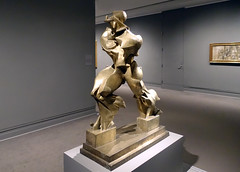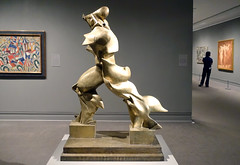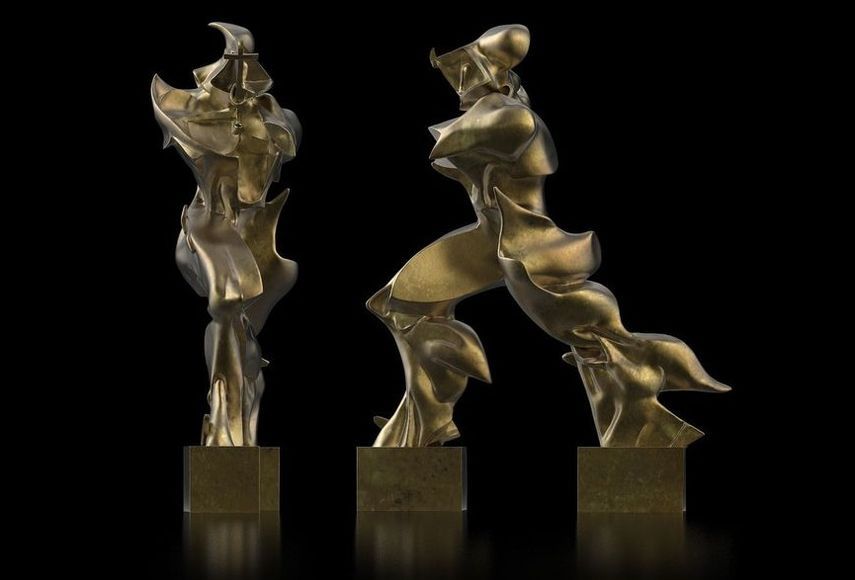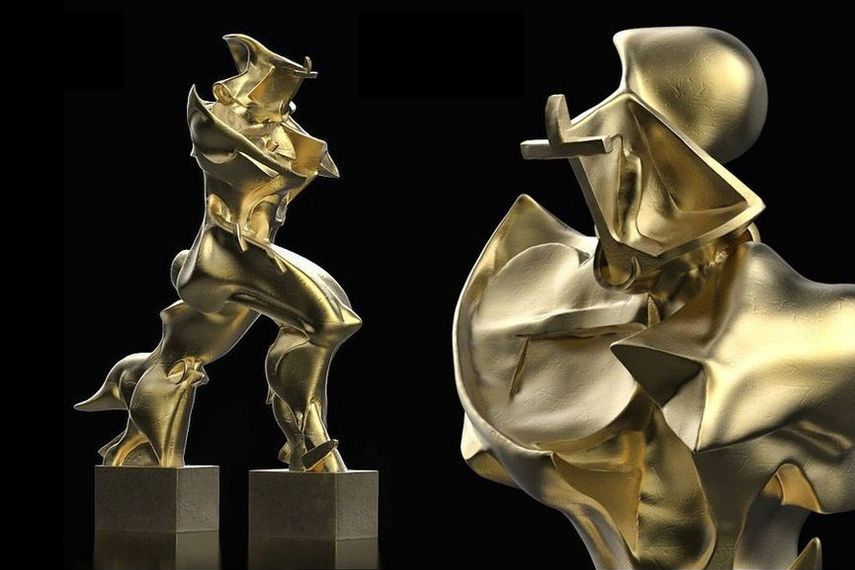Paul McCarthy unique forms of continuity in space one - twelve rubber prestia plaster timber paint 27 x 393 x 140 cms 2019. Boccioni exaggerated the bodys dynamism so that it embodied the urge towards progress.

Umberto Boccioni Unique Forms Of Continuity In Space Smarthistory
47 34 x 35 x 15 34 in.

Unique forms of continuity in space significance. Other articles where Unique Forms of Continuity in Space is discussed. Forme uniche della continuità nello spazio. Unique Forms of Continuity in Space.
Unique Forms of Continuity in Space. It does not depict a particular person at a specific moment but rather synthesizes the process of walking into a single body. Boccioni had developed these shapes over two years in.
Unique Forms of Continuity in Space was created by Umberto Boccioni. The Futurists wanted to destroy the museums but in the end their work was added to the canon of Italian sculpture. Boccioni exaggerated the bodys dynamism so that it embodied the urge towards progress.
His iconic masterpiece is Unique Forms of Continuity in Space1913 original in the Museum of Contemporary Art in Sao Paulo Brazil. The Futurists celebration of the fast pace and mechanical power of the modern world is emphasized here in the sculptures dynamism and energy. Unique forms of continuity in space.
1213 x 889 x 40 cm Type. The parabolic curves of the engines rotation remind Kaylee of Spring. The sculpture may reflect ideas of the mechanised body that appeared in futurist writings as well as the superman envisaged by the philosopher Friedrich Nietzsche.
Its undulating surfaces seem to transform before our eyes. Up until 1912 Boccioni had been a painter but after visiting. Unique Forms of Continuity in Space is full of this exciting forceful movement forward not only showing the body striding ahead but also the swirling eddies of the bodys impact on its environment.
Unique Forms of Continuity in Space integrates trajectories of speed and force into the representation of a striding figure. Unique forms of continuity in space one - twelve rubber prestia plaster timber paint 27 x 393 x 140 cms 2019 a consequence of - a breather of air The Dock Carrick on Shannon 2019 Photo. Unique Forms of Continuity in Space.
It is seen as an expression of movement and fluidity. Column on 17 January 2008 and was viewed approximately 2065 times check views. The figures marching silhouette appears deformed by wind and.
117 x 305 x 875 cm. The text of the entry was as follows. Marinetti was the first to cast the work in bronze in 1933 no doubt with the aim to better preserve it for posterity since the plaster had already started to.
Boccioni did not show this through the repetition of arms legs and faces but by having fluid drapery flow behind and being armless. 1913 cast in 1972 Physical Dimensions. For some Unique Forms of Continuity in Space shows a figure striding into the future.
Unique Forms is one of a series of sculptures of striding figures that Boccioni created in 1913. A fact from Unique Forms of Continuity in Space appeared on Wikipedias Main Page in the Did you know. Boccioni produced several mixed media sculptures and the original Unique Forms of Continuity in Space was like the majority of his sculptures made of plaster.
There is no known record of Boccioni himself wanting to cast any of his plaster sculptures in metal during his lifetime so the fact that Unique Forms of Continuity in Space is almost universally represented as a bronze sculpture is not according to his wishes. Unique Forms of Continuity in Space depicts a powerful human form in action seemingly flying or gliding through the air. Metropolitan Museum of Art New York NY.
The sculpture may reflect ideas of the mechanised body that appeared in futurist writings as well as the superman envisaged by the philosopher Friedrich Nietzsche. At the age of 34 Boccionis influence on sculpturecontinued to influence other artists many years after his death. Inevitable but fickle infinitely intricate but so simplelife and death and breathing round and round and a soft hum that only she perceives as music as language as everything.
Surpassing the limits of the body its lines ripple outward in curving and streamlined flags as if molded by the wind of its passing. In Unique Forms of Continuity in Space and Head House Light 1911 he carried out his theories that the sculptor should model objects as they interact with their environment thus revealing the dynamic essence of reality. Boccioni puts speed and force into sculptural form.
The Futurists wanted art to break from the Classical and Renaissance styles still dominant in Italy at the start of the Twentieth Century. In Unique Forms of Continuity in Space the figure is aerodynamically deformed by speed. Unique Forms of Continuity in Space has also been compared to Rodins armless Walking Man of 1907.
Casts in the Tate London MoMA New York and elsewhere a work which illustrates his theory. In Unique Forms of Continuity in Space the figure is aerodynamically deformed by speed. The figure strides forward.

All You Need To Know About Boccioni S Unique Forms Of Continuity In Space Widewalls

Umberto Boccioni Unique Forms Of Continuity In Space Smarthistory

Umberto Boccioni Unique Forms Of Continuity In Space 1913 Cast 1931 Or 1934 Moma

Umberto Boccioni Unique Forms Of Continuity In Space 1913 Cast 1931 Or 1934 Moma

All You Need To Know About Boccioni S Unique Forms Of Continuity In Space Widewalls

Umberto Boccioni Unique Forms Of Continuity In Space Smarthistory

Umberto Boccioni Unique Forms Of Continuity In Space 1913 Cast 1931 Or 1934 Moma

All You Need To Know About Boccioni S Unique Forms Of Continuity In Space Widewalls

All You Need To Know About Boccioni S Unique Forms Of Continuity In Space Widewalls
0 comments:
Post a Comment